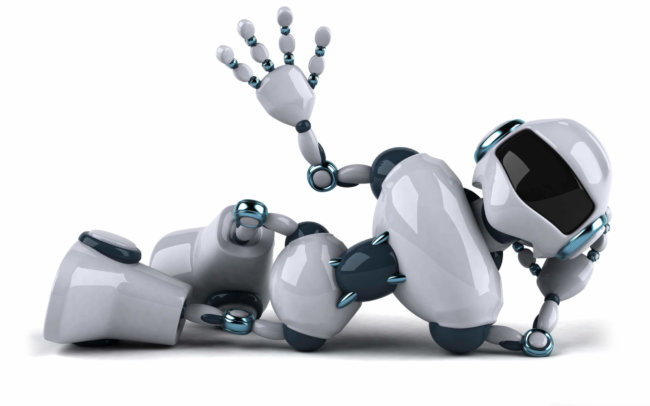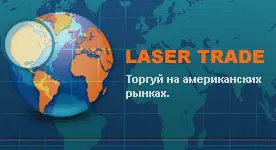
In recent years, more and more funds and investment banks are laying off traders and portfolio managers., replacing them with mathematicians, quanta and machines. Famed financier Paul Tudor Jones after being laid off 15% staff of his fund told the remaining staff: No man is better than a machine, and no machine is better than a man with a machine ("No man is better than a machine, and no car is better than a man with a car ").
There is every reason to believe, that such an approach to trading will only gain popularity in the future and ultimately will almost completely oust the human factor from the market. To verify this, enough to take a closer look at, What have modern financial markets become?.
Celebration of robots
Stock market quotes, which we see in terminals, - this is the result of real transactions, committed by real market participants, who compete with each other for the best deal, for the best idea.
but, despite the fact that all market participants are unique in their own way, their behavior is characterized by certain common features. In this way, all traders and investors can be divided into groups, which are characterized by one or another decision-making model. Recognizing in time the dominance of a group in the market and defining the idea, motivating this group to complete a specific transaction, you can benefit from either participating in the same operation, or, against, from participating in the opposite transaction (contrarian trade). Attempts to model the behavior of market participants underlie not only most technical analysis tools, but also many algorithmic strategies.
When making a deal, the buyer "pushes" the price of the asset up, while the seller is down. That is, each participant, making a deal, changes the general state of the market and the positioning of its participants. So, if the participant is faced with the task of making a deal for a large volume, then, placing an order "on the market", he runs the risk of greatly influencing the value of the asset, thereby obtaining the worst possible strike price.
There are many ways to optimize these transaction costs.. The simplest of them is to put an application "in the glass" for the entire volume and wait, until there is a counterparty for its execution. But in this case, there is a risk, that the rest of the bidders, seeing a major buyer or seller in the market, will start to "front" him in the hope, that he will buy above or sell below the price, specified in his application.
It is much more efficient to split a large order into many small orders and execute them according to a specific algorithm., to buy or sell a particular volume unnoticed by the market. It is these methods of executing large orders that are called "algorithmic trading" about 40 years ago.
To date, according to various estimates, the total share of the securities market turnover from algorithmic trading is 80-90%, which also includes high-frequency (HFT – High Frequency Trading) strategies (45-55%), algorithmic claims (Program Trading) from large investment funds (15-25%), characterized by long periods of execution, and algorithmic applications from Quantitative and Systematic funds (10-20%).
Complex systems
Unlike investment funds, operating with securities portfolios, Quantitative and Systematic funds operate with portfolios of "system strategies". Such strategies are based on a certain set of rules., on the basis of which a buy or sell signal is generated. This signal, upon passing the risk filters, turns into an order, after the execution of which the fund position is formed. In general, it is not even necessary to use computers to apply system strategies., however, without complete automation of data collection and analysis processes, control and execution of orders is almost impossible to achieve stable trading results.
Similar automated trading systems, usually, operate in hundreds, and sometimes even thousands of different strategies, working simultaneously. Besides, most often trading is carried out on several asset classes and on several exchanges around the world. To optimize transaction costs (time delays in receiving market data and sending orders to the exchange) Servers, on which connectors and trading algorithms work, placed as close to the exchanges as possible, ideally in data centers of exchanges (colocation).
As a result, such an automated trading system is a system distributed across several servers., on which hundreds of different strategies work at the same time, usually, with unified risk control and position accounting centers. Creating and maintaining such automated trading systems is a very time-consuming and costly business., in which the development of trading strategies, - Only part of the overall process, but not its basis. Even an ideal strategy is doomed to failure in the event of a failure in just one subsystem of the overall trading system infrastructure..
For system strategies, despite the versatile talent of their creators, complexity of mathematics and uniqueness of approaches, common features, similarly, as well as for behavioral models of "live" market participants.
The art of searching
There is a fairly widespread opinion, that one single strategy can be done, which will make money to its creator in any market for a long time, but, Unfortunately, this is not true. It is important to understand, that any system strategy is based on if-then logic. That is, as a result of research, a certain pattern was found, and the algorithm generates trading signals with the expectation of, that after some time the prices of the analyzed assets will go up or down with a greater probability, than in the opposite direction.
However, when the same pattern is discovered by a sufficient number of traders, she will inevitably disappear. Thereafter, probably, new patterns will appear, which will also disappear over time, and so on in a circle. Furthermore, different strategies work under different market conditions or, it would be more correct to say, different market modes, the main indicator of which is the realized volatility of assets in different periods of time.
If we talk about HFT strategies, then here, in the micro race world- and nanoseconds, opportunities from the market, usually, don't leave, but you need to constantly invest very serious money in infrastructure and optimization of algorithms, to be the first to detect the appearance of some patterns and be the first to send orders to the exchange. That's why, Unfortunately, with a small number of tradable strategies, it is almost impossible to achieve sustainable results.
However, with the constant search for new patterns, building strategies based on them and integrating them into an automated trading system, this problem can be solved. The most difficult thing in managing a portfolio of system strategies is their correct classification by types and risk metrics and, depending on market regimes and estimated probabilities of success, timely setting optimal weights for each group of strategies and for each individual strategy..
Many teams with big money have appeared on the market today, that work against super popular systemic strategies, identifying their weaknesses. Situation, when alone trading robots "Catch" other gape robots, is absolutely real. Therefore, the effectiveness of automated trading systems, operating system strategies, will ultimately be determined by those actions, which they take in case, if the market behaves unexpectedly, out of the frame of the strategy.
A source: http://www.forbes.ru/amp/351467

